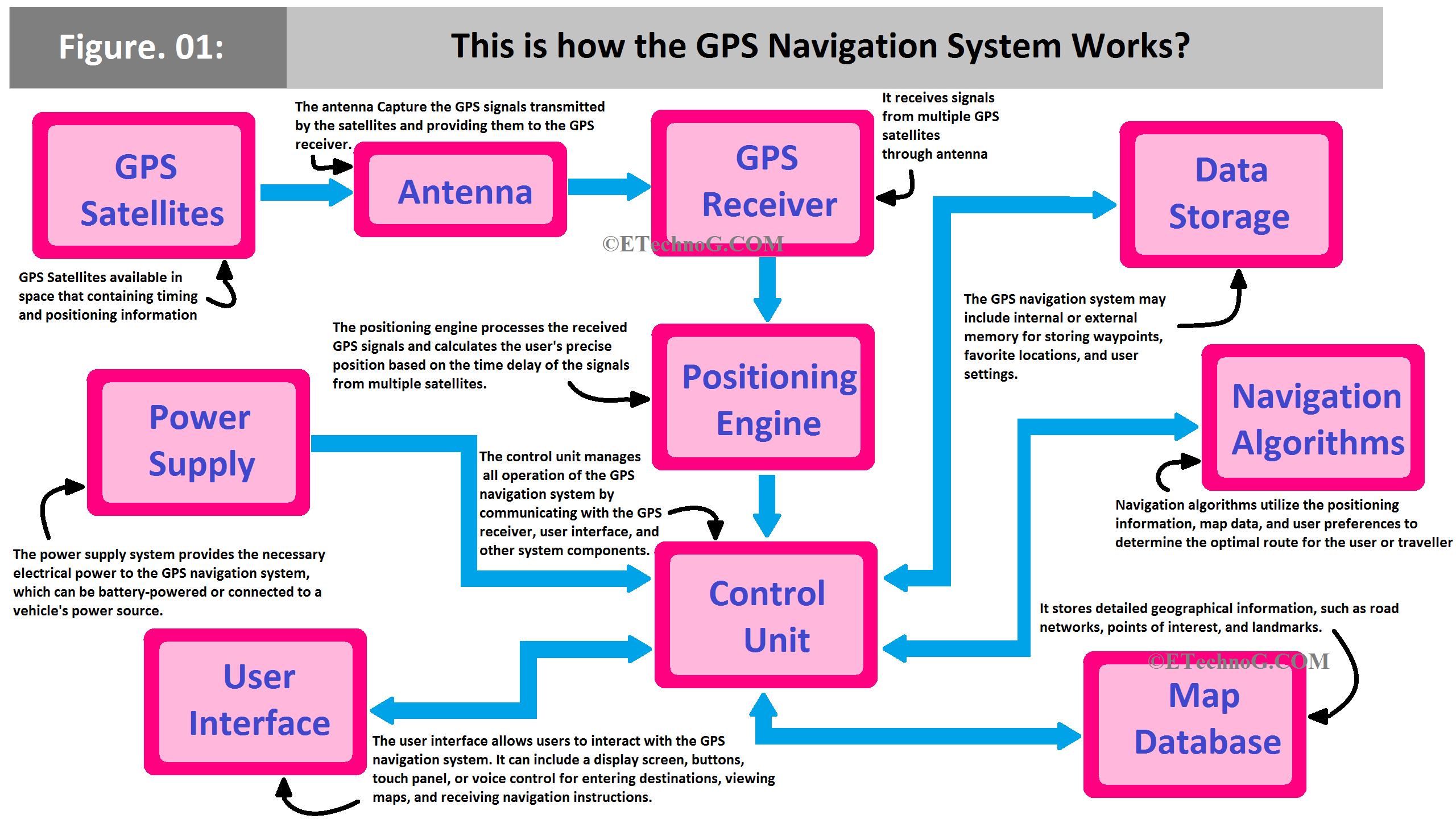How GPS Navigation System Works? Learn with Block Diagram
A GPS navigation system or Global Positioning System navigation system is a device that helps you find your live location or way or route for traveling by using signals from satellites in space. It tells you where you are and provides directions to your desired destination. It works by receiving signals from multiple satellites and using them to calculate your exact location on the Earth's surface.
With a GPS navigation system, you can input your destination, and it will guide you through visual maps and spoken instructions, helping you navigate unfamiliar routes or find the shortest path to your destination. It's like having a digital map and a personal guide all in one, making it easier to travel and explore new places. In this article, we are going to learn how the whole GPS navigation system works with a detailed block diagram. This block diagram will us a lot to easily understand how actually the GPS navigation system works.
Click on the Image to Enlarge
As you see in the above block diagram the GPS navigation system has so many important parts that are represented by different blocks. I may sure that you already understand the working principle. Anyway let's discuss this with a very short explanation,
The main fundamental parts of the GPS system are,
- GPS Satellites
- Antenna
- GPS Receiver
- Power Supply
- User Interface
- Positioning Engine
- Control Unit
- Data Storage
- Navigation Algorithms
- Map Database
The GPS navigation system is made up of different parts as listed above. GPS Satellites continuously move in space and send timing and position information toward the Earth. The Antenna catches the GPS signals from the satellites and sends them to the GPS receiver. So, you may understand this is completely wireless communication.
Now, the GPS Receiver gets signals from multiple satellites through the antenna. The Power Supply system provides proper electrical power to all the components of the GPS system which can come from a battery or a vehicle's power source. The User Interface lets people or the traveler interact with the GPS system by entering destinations, looking at maps, and getting navigation instructions.
The Positioning Engine uses GPS signals to figure out the exact position of the user. The Control Unit manages all the GPS system's activities by communicating with different parts. Data Storage keeps track of favorite places, settings, and waypoints. Navigation Algorithms use position info, maps, and user preferences to find the best route. Lastly, the Map Database has lots of details about roads, landmarks, and interesting places.
Read Also:
How GPS Navigation System Works? Learn with Block Diagram
 Reviewed by Author
on
March 31, 2024
Rating:
Reviewed by Author
on
March 31, 2024
Rating:
 Reviewed by Author
on
March 31, 2024
Rating:
Reviewed by Author
on
March 31, 2024
Rating:

